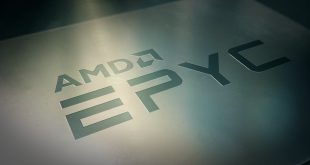The actual creation of next generation content is one of the most processor-intensive tasks you can demand from your system. With the launch of its next-generation Maximus products at SIGGRAPH in Los Angeles, nVidia is aiming to place the bar high enough that no one else can touch the customers who want that kind of power. KitGuru dons SPF30 and heads over to see what the fuss is about in LA.
If the second fastest computer in the world has nVidia Tesla cards at its core, you know that the graphics giant must be doing something right, but with a name like Maximus (and definitely with a second generation of Maximus), you must expect even more.
First up, you won't find Maximus listed on any of nVidia's online product sheets. That's because it's a ‘technology'. In the case of Maximus, it's a combination of brand new Tesla cards (e.g. the $3,199 K20 which is due to be delivered by Santa around Xmas 2012) and the latest high-end Quadro cards (e.g. the $2,249 Quadro K5000).
The ‘k' is not a nod to Intel and its black-arts overclocking range of processors, but rather an indication that the card in question uses nVidia's Kepler technology at its core. Comparing the similarly named Quadro 5000 with the 5000k, you can see a huge difference. The new 5000k has almost 5x the Stream processors, 3x the texture units, an 80% increase on memory clock and yet the memory bus is smaller (256-bit Vs 320-bit) and it has less ROPs (32 Vs 40).
So which market is nVidia targeting with its second generation Maximus products? Well the list of customers who have certified applications includes Abaqus, Adobe, ANSYS, Autodesk, Blackmagic, Dassault, Eyeon, Paradigm, PTC, Quantel and Solidworks. Impressive stuff.
The Tesla part of the equation is when nVidia takes a high end graphics card and removes the display output sections. When the K20 launches toward the end of this year, it will have more than 7 billion transistors [One for every man, woman and child on the planet – Ed] on standby for your favourite applications – and it will suck up to 300w from your electrical supply in order to keep the 7 billion on the move.
Combining Tesla K20 cards with Quadro k5000 cards will give you unparalleled professional processing power, according to nVidia. From their own literature, its not only the peak-power available to crunch the numbers in a single application that will give the new Maximus technology a leadership position – but also the ability for the workstation user to kick of multiple demanding applications at once.
This increase in productivity was highlighted by industry analyst and former AMD VP, Patrick Moorhead, “My favorite thing about nVidia's Maximus 2 is its impact on design workflow. Changing that means it's a big deal”.
nVidia CEO Jen Hsun Huang's opinion seems to resonate with that feeling, if his PR minions actually share his thoughts, “nVidia's Maximus technology already dramatically accelerates workflows by simultaneously performing complex analysis and visualization on a single machine”.
Or ‘Doing lots of things at once, really quickly, is cool', as one expert put it.

KitGuru says: Whether you go with nVidia's second generation Maximus platform toward the end of this year or choose a competing technology, anyone involved in design/content creation will love the way this kind of power can liberate your creativity. We've lived through an age when real time video processing was an achievement – now we're into an era where real time is far, far too slow.
Comment below or in the KitGuru forums.
 KitGuru KitGuru.net – Tech News | Hardware News | Hardware Reviews | IOS | Mobile | Gaming | Graphics Cards
KitGuru KitGuru.net – Tech News | Hardware News | Hardware Reviews | IOS | Mobile | Gaming | Graphics Cards


